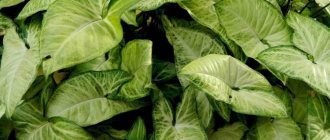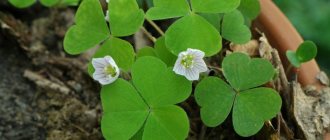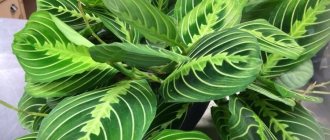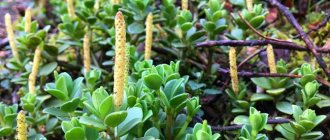Is it difficult to grow a palm tree?
Even a novice gardener can grow them, provided that a number of conditions are met to create the microclimate that is necessary for the development of the plant. It is no secret that not only novice gardeners, but also experienced connoisseurs of the beauty of these beautiful plants want to grow an ornamental houseplant in the form of a palm tree.
The word “palm” is translated from Latin as “palm”. And this is completely justified, because its leaves in most varieties resemble a human brush. There are two types of domestic palms, which are called pinnate and fan. Under natural conditions, they grow in the subtropics and tropics, where it is warm and humid.
If you carefully study the conditions in which these plants grow naturally and can create the necessary microclimate, then growing different types of domestic palm trees will not cause you any special problems. In order for this tropical tree to become home and be comfortable in the created conditions, it is necessary to follow fairly simple rules for caring for it.
Almost all types of domestic palm trees (you can see the photo in this article) require spacious rooms. These exotic trees do not tolerate nearby other plants.
Dracaena
For several decades now, this particular flower has been used for landscaping apartments, houses, and official institutions. The types of domestic palm trees are so diverse that everyone can choose a variety for themselves. This showy plant has tufts of long leaves gathered in panicles at the top of its trunk. They can be painted in different colors - from light to dark green. Striped specimens are common.
Often, several trunks grow from the root, up to two meters high. This type of decorative indoor palm tree is easily propagated by cuttings.
Date palm
This variety is the most famous: our great-grandmothers grew it in their homes. And this is no coincidence - it is this species that is most suitable for growing at home. Perhaps the only drawback of this plant is its impressive size: it is not possible to grow it in every room.
Flower growers value this variety for its lush crown, consisting of beautiful feathery leaves. This species takes root well and actively develops even with minimal care.
Types of similar domestic crops, like the palm family: what do they look like and what are they called?
There are species that are very easy to confuse with indoor palms. Most often these are succulents or herbaceous plants that vaguely resemble representatives of the arecaceae family. This group includes:
Nolina
This tropical plant of the Asparagus family looks like a bottle palm. The thickening at the bottom of the stem serves for moisture accumulation or accumulation of nutrients. The upper part of the trunk is decorated with a bunch of linear narrow leaf blades.
Euphorbia (spurge spurge, or spurge palm)
This is a herbaceous crop with a thickened ribbed stem and oval leaves. The small flowers of this plant are very rich in nectar.
Reference . A characteristic feature of euphorbia is the ability to shoot ripened seeds throughout the room. When it gets into neighboring pots, the plant begins to actively capture new territories.
Cyperus (cat palm)
This representative of tropical swamps has straight grassy stems and an umbrella of hard leaves. By a strange coincidence, the varieties that have received the favor of domestic cats have taken root best in indoor conditions.
Castor bean
The herbaceous plant belongs to the Euphorbiaceae family. It has hollow vertical stems that are painted in various shades - from purple to black-brown. Its huge leaves, shaped like maple leaves, reach 80 cm in diameter. The flowers are small and inconspicuous.
Hovea
Different types of home decorative palm trees came to us from different countries. For example, howea is native to Australia. The tree has a straight trunk, wrapped in leaf scars. Long feathery leaves, spreading branches, sometimes reaching four meters in length - this is exactly what this palm tree looks like. As you understand, such a plant needs a fairly spacious room.
Among the many varieties of Howea is Forstera, which has short red petioles, vertically arranged, and luxurious spreading leaves on a single trunk. This species tolerates lack of lighting very well. The leaves do not turn yellow or dry out, and even in very dry air they remain green and fresh. Howea is quite resistant to pests, but grows very slowly.
Is the plant dangerous for cats?
Cyperus is called the cat palm. It does not pose a threat to the health of the animal; moreover, cats, as a rule, themselves show interest in the flower. Eating leaves is objectively beneficial for them.
Reference! The plant cleanses the stomach of hairballs and other indigestible things that gradually accumulate in it.
Some people specially plant orchard so that the cat will eat it. This has almost no effect on the appearance of the plant: its leaves very quickly restore their shape.
Liviston Palm (Latania)
This plant fascinates even people who have little interest in plants. Magnificent large shiny fan leaves can decorate any interior. It must be admitted that this is a rather capricious plant: it needs good lighting. In addition, when there is insufficient air humidity, the tips of the leaves of this palm tree dry out.
And at the same time, this is one of the few types of domestic palm trees that does not require too much care at home and at the same time grows quite quickly.
Reproduction and planting of Cyperus
Cyperus can be propagated by seeds, spreading them directly onto the substrate. Leave them to germinate in a warm place with enough light under the film. Ventilate and spray periodically, and when 5-6 leaves appear, plant.
Strong, large plants are divided into parts during the transplanting process. Make sure that there are at least three shoots on each division. The sockets also take root well and quickly. You don’t even have to cut them right away: just bend them to the ground and dig in a little.
You can also root apical cuttings, but there are nuances here. First, cut the leaves in half. Secondly, root the cuttings in water with the leaves facing down.
Photo: cold-hardy.com
Top dressing
A lack of microelements negatively affects the leaves: they become covered with brown or yellow spots. Palm growth slows down and leaves fall off. In this case, you can use liquid fertilizers, for example, Agricola. A tablespoon of the drug is diluted in water (10 l). Apply it once every ten days in the summer and every twenty days during the dormant period. After fertilizing, it is necessary to loosen the soil.
Brief description of cultivation
- Bloom . Cyperus is cultivated as an ornamental foliage plant.
- Illumination . A shaded place or a large amount of bright but diffused light.
- Temperature regime . During active growth - from 20 to 22 degrees, in winter - no colder than 12 degrees.
- Watering . During the growing season, watering should be frequent and abundant. Make sure that the root system of the bush is always in a moist substrate. As a rule, a pot with such a flower is placed in a flowerpot filled with water. In winter, watering should be moderate.
- Air humidity . It requires high air humidity; such a flower must be frequently moistened with a spray bottle.
- Fertilizer . In the spring-summer period, the plant needs to be fed regularly once every 20 days; for this, complex mineral fertilizer is used.
- Rest period . It is not clearly expressed. The flower grows all year round.
- Transplant . The plant is replanted as needed at any time of the year.
- Soil mixture . To prepare it, combine humus and peat soil in a 1:1 ratio, and add a sixth of the marsh silt to the resulting mixture. When the flower is transplanted, the surface of the soil mixture must be covered with a layer of sand. This plant is suitable for growing hydroponically.
- Reproduction . Rosettes, cuttings, dividing the bush and seed method.
- Harmful insects . Thrips, mealybugs, spider mites and whiteflies.
- Diseases . If the air humidity is too low, the tips of the leaf blades begin to dry out.
- Properties . Cyperus has medicinal properties.
Cyperus. Reproduction, planting and care.
Transfer
These indoor beauties are rarely replanted, as needed, for example, when the container becomes too small for the plant. For replanting, choose a larger pot. Carefully break the old container, transfer the tree along with a lump of earth to a new pot, adding soil. The roots cannot be cut.
Palm trees, as a rule, do not tolerate transplantation well, therefore, to bring the flower out of stress, frequent and intensive watering will be required. Magnificent palm leaves need to be cleaned from dust using a soft textile cloth. Sometimes they are bathed with warm water.
Cyperus care
Cyperus is completely unpretentious, but at the same time its requirements differ from most usual ones. So we advise you to familiarize yourself with the intricacies of care in advance!
Temperature
Cyperus is not afraid of open windows, drafts and cold air. It takes root in the garden, and indoor flowerpots can be safely taken out onto the balcony. Comfortable summer temperature is 20-25 degrees.
Photo: spellonyou.ru
Lighting
Cyperus is a rare plant that feels better somewhere on a shelf rather than on a windowsill. It categorically does not like direct sunlight and grows best in light partial shade.
Photo: fruittree.ru
Watering
In its natural environment, Cyperus grows in swamps, so flooded soil does not bother it. Feel free to water it every day if the temperature around is above 20 degrees. In winter, slightly reduce the frequency of watering and start draining excess water from the pan.
Photo: keywordbasket.com
Humidity and spraying
Cyperus needs to be sprayed regularly and generally provided with high humidity. For example, it is very good to keep it near an aquarium. You can place the flowerpot directly in a container of water, but do not forget to change it regularly.
Photo: sbwildflowers.wordpress.com
The soil
It is useful to add a little “native” components for Cyperus to the soil - dry grass or silt. Otherwise, mixtures based on peat with turf and sand are suitable.
Photo: bee-garden.ru
Fertilizers and fertilizing
Cyperus is fertilized with complex mixtures for deciduous plants almost all year round, except winter. The optimal interval between feedings is 2-3 weeks. We recommend using liquid mixtures, but for young bushes, lower the concentration.
Photo: na-dache.pro
Trimming
Cyperus grows foliage very quickly and intensively, so in spring or autumn it can be cut at least halfway. Remove yellow and weak shoots as they appear.
Photo: todolandscape.blogspot.com
Wintering
The heat-loving garden cyperus will not survive the winter outside. It will have to be transplanted into flowerpots and removed indoors. It doesn’t need a cool winter either, so don’t lower the temperature below 16 degrees.
Photo: tdsl.ru
Transfer
Cyperus easily tolerates transplantation and needs periodic renewal of the soil and flowerpot. During the process, inspect the roots and trim off damaged areas. The shape of the flowerpot depends on the type of root system of a particular species.
Photo: 7dach.ru
Hamedorea (50 photos): types, cultivation and care at home











